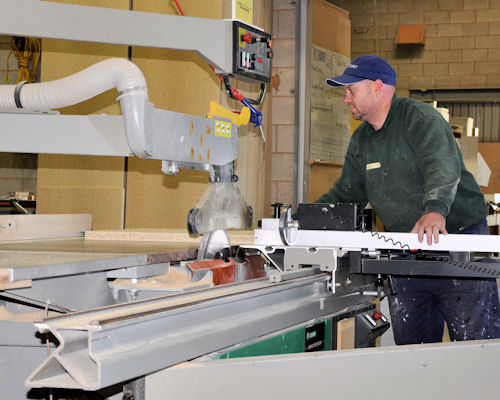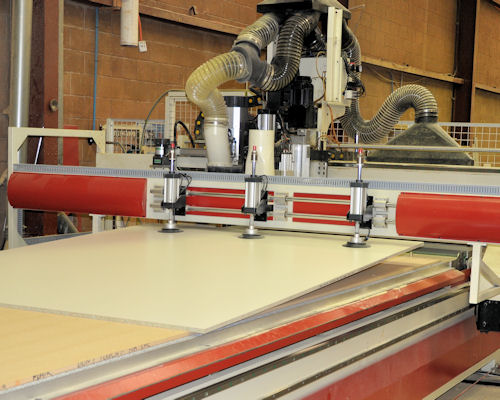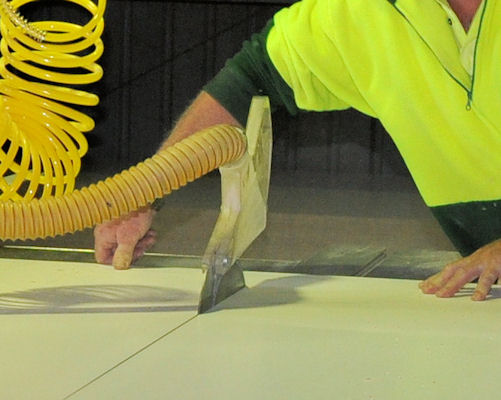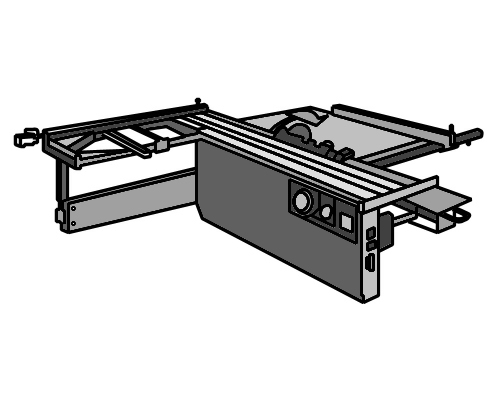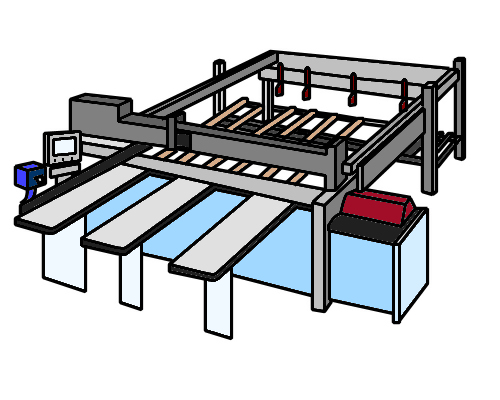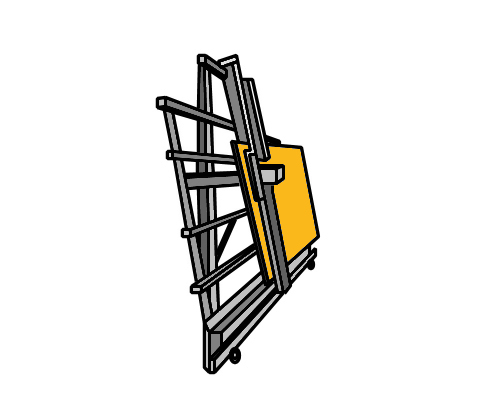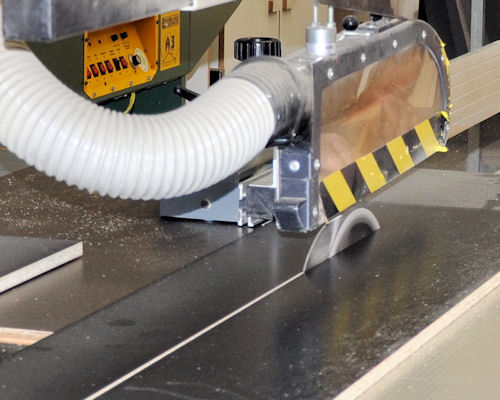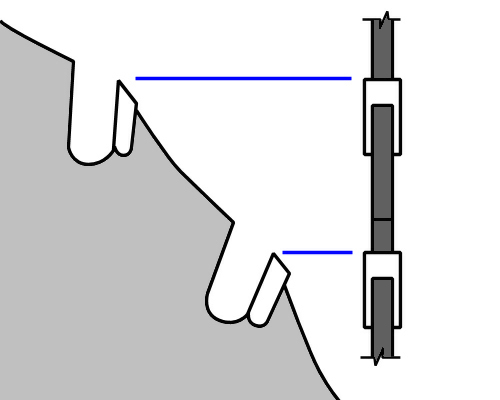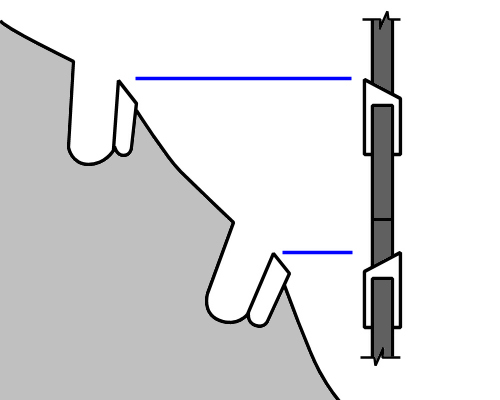Panel saws
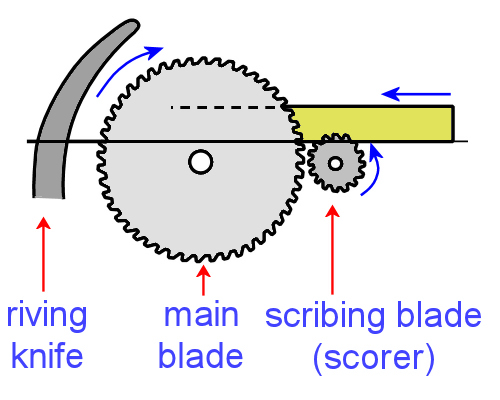 Audio for slide 3 (mp3 |6|KB)
Audio for slide 3 (mp3 |6|KB)
Panel saws that are designed to cut laminated boards often have a scribing blade (also called a 'scorer') in front of the main saw blade.
It cuts slightly into the underside of the panel before the main blade cuts through the full thickness.
This helps to stop the problem of 'break-out' occurring on the underside of the board, where the surface chips out as the teeth pull through the material.
On the other side of the main blade is a riving knife.
This is a piece of steel shaped to match the curve of the saw blade.
Its purpose is to stop the material on either side of the kerf (the saw cut) from closing up and jamming the blade.

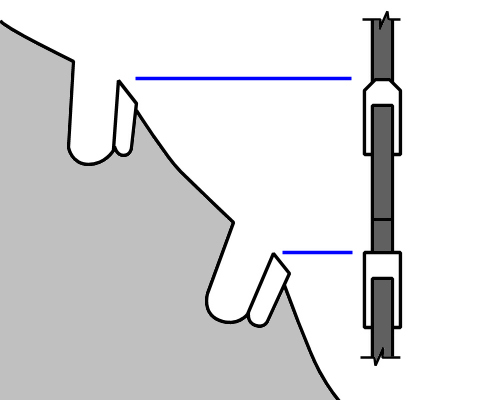 Audio for slide 11 (mp3 |6|KB)
Audio for slide 11 (mp3 |6|KB)
Triple chip teeth also have a different profile on every second tooth.
The 'leading' tooth has a double 45 degree corner bevel.
The second tooth, or 'raker', removes the two corners left behind by the bevels in the leading tooth.
This blade requires more maintenance, but is the most suitable for plastic laminates.

The 'leading' tooth has a double 45 degree corner bevel.
The second tooth, or 'raker', removes the two corners left behind by the bevels in the leading tooth.
This blade requires more maintenance, but is the most suitable for plastic laminates.

Go to Cutting lists
Industry Network Training and Assessment Resourses
© 2016 Workspace Training


